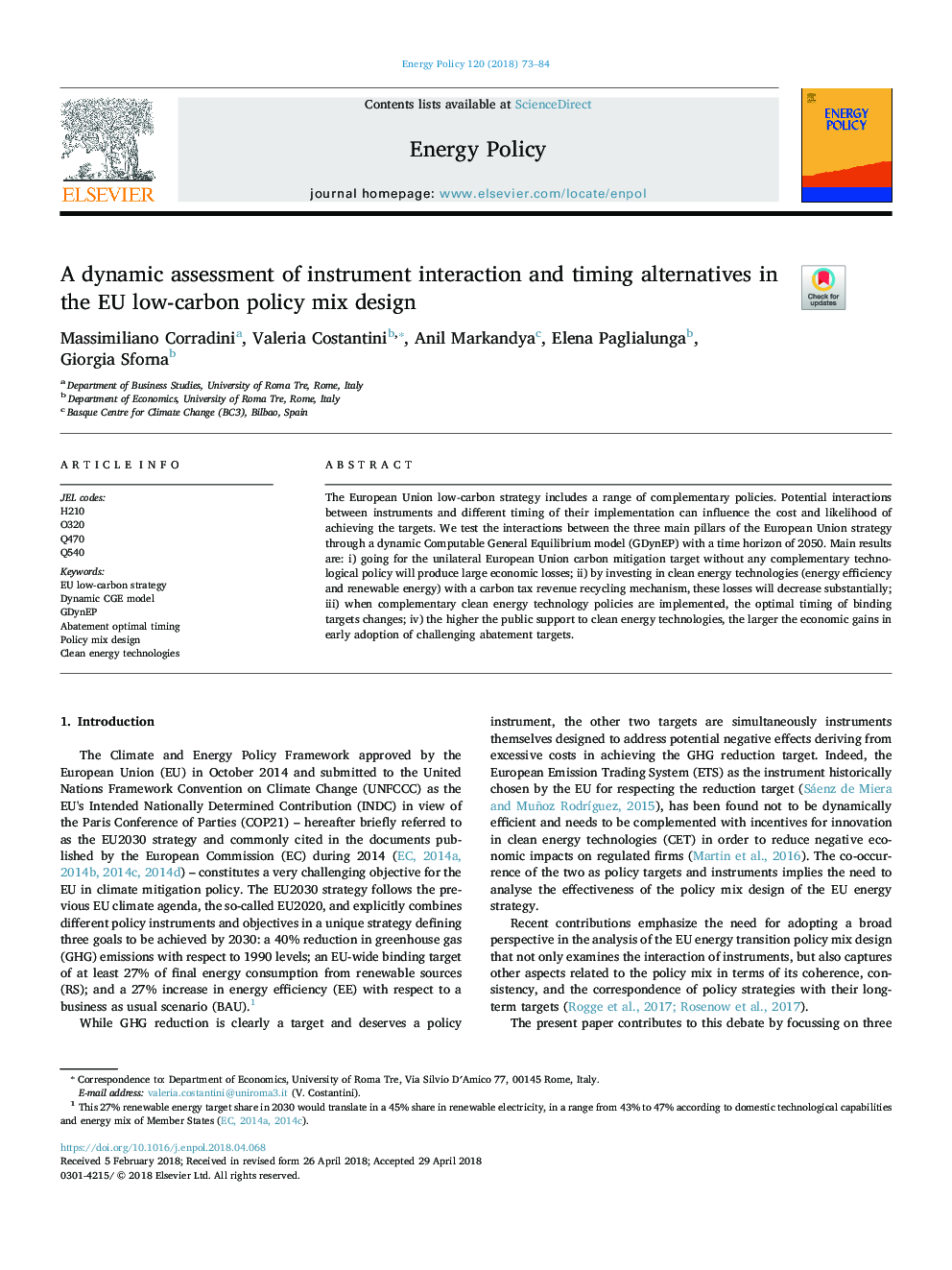| Article ID | Journal | Published Year | Pages | File Type |
|---|---|---|---|---|
| 7396976 | Energy Policy | 2018 | 12 Pages |
Abstract
The European Union low-carbon strategy includes a range of complementary policies. Potential interactions between instruments and different timing of their implementation can influence the cost and likelihood of achieving the targets. We test the interactions between the three main pillars of the European Union strategy through a dynamic Computable General Equilibrium model (GDynEP) with a time horizon of 2050. Main results are: i) going for the unilateral European Union carbon mitigation target without any complementary technological policy will produce large economic losses; ii) by investing in clean energy technologies (energy efficiency and renewable energy) with a carbon tax revenue recycling mechanism, these losses will decrease substantially; iii) when complementary clean energy technology policies are implemented, the optimal timing of binding targets changes; iv) the higher the public support to clean energy technologies, the larger the economic gains in early adoption of challenging abatement targets.
Related Topics
Physical Sciences and Engineering
Energy
Energy Engineering and Power Technology
Authors
Massimiliano Corradini, Valeria Costantini, Anil Markandya, Elena Paglialunga, Giorgia Sforna,
